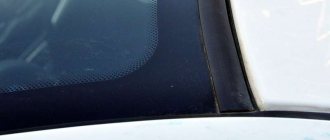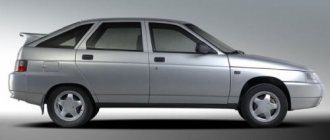- December 23, 2020
- Cars
- Nadezhda Zorina
"Niva-2121" is one of the most famous Soviet and Russian SUVs. This car first appeared in the second half of the 20th century. "Niva-2121" is still being produced. But new models of this SUV are already available with injection engines. Models with carburetor engines can also be found now, but only on the secondary market.
Quite often, many motorists wonder which Niva-2121 is better - with an injector or a carburetor? So, with the Niva injector it is more reliable.
Features of a carburetor car
Before deciding on the choice of a carburetor or injection Niva, it is very important to familiarize yourself with the technical characteristics of both SUV models.
The very first Niva-2121 engine was taken from the Zhiguli. In both the first and second cars, the engine had a large combustion chamber volume, that is, its working volume was 1580 cubic centimeters. Thanks to this engine, it was possible to develop power up to 80 horsepower. And the car could accelerate to 100 km/h in just 20 seconds.
Many novice motorists quite often ask specialists: what is the fuel consumption of the Niva-2121? The carburetor installed on the car affects the difference in fuel consumption compared to a car with an injection engine. Let's consider this nuance in more detail.
For example, judging by the technical data sheet of the car, then 13 liters is the fuel consumption of the Niva-2121. The carburetor, or rather its presence, greatly influences this indicator.
Over time, the engine became more and more modernized. And such an engine began to be numbered 21213. The working volume of the new engine became 1690 cm3, while the power of the power unit amounted to 83 horsepower.
Thanks to the new engine, the car has become more playful. It now takes 18 seconds to accelerate to 100 km/h. It is worth noting that with the introduction of the new engine, fuel consumption has decreased significantly: in contrast to the fuel consumption of the Niva-2121 with a carburetor (1.6 l), it has become less.
For example, if you look at the technical data sheet of an SUV, you will see that the manufacturer claims 11 liters. And as car owners themselves note, this figure is 13 liters.
In winter, the fuel consumption of the Niva-2121 with a carburetor is higher, since at this time it is necessary to warm up the car quite often and for a long time.
Gasoline consumption factors in the city
In the city, the factor of poor engine response is added; with frequent accelerations, it becomes significant. Yes, the head was repeatedly modernized, distributed injection was installed, but the block originally designed for a working volume of 1.2 liters was brought to the limit by boring it for 1.7 liters.
It is already prone to overheating, and there is simply nowhere to increase the volume further; the walls of the cylinder will be as thick as tissue paper. Turbocharging is not an option; this unit will be a black sheep in Niva, requiring a fundamentally higher level of production and operation culture.
So the driver in the city has to press the gas pedal to the floor, trying not to get out of the general flow, consisting mainly of modern, nimble foreign cars, paying for it with excessive consumption of gasoline.
Features of an injection car
The Volzhsky plant completely switched to injection engines in 2005. These changes affected not only the Niva-2121 SUV, but also many other cars. The new engine received a new number - 21214. The volume of the new gasoline unit began to be 1690 cm3. As for its power, it remained the same, the same as the carburetor - 83 horsepower. The acceleration remained the same, nothing has changed.
The fuel consumption of the Niva-2121 with an injector decreased, in contrast to the carburetor engine, by about 1.5 liters. This is already a big advantage compared to previous Niva models.
As for the average fuel consumption of the Niva-2121 per 100 km, these figures look like this:
- If you drive exclusively on the highway, then 8.3 liters will be spent per 100 km.
- If you drive exclusively around the city, then per 100 km the fuel consumption will be 12 liters.
- And if you drive in mixed mode, 100 km will require 10 liters of gasoline.
These data were obtained under standardized conditions using special measuring equipment.
Today, Niva-2121 is produced with an engine whose index is now 21214-28. The volume of the working engine is now 1774 cm3. The power of the new engine is 92 horsepower. And the SUV began to accelerate a little faster; it could accelerate to 100 km per hour in just 17 seconds. At the same time, fuel consumption does not exceed 10 liters.
Option 4 of 4: How to plan a trip?
1. The trip must be planned in advance. Decide on a list of places you need to visit, plan a route so that you don’t have to circle around the city in vain, burning fuel.
2. Carefully thinking through the route will help to significantly save fuel . Be sure to take into account traffic jams and traffic lights. Give preference to wide avenues rather than narrow streets with traffic jams.
3. It helps to keep a record of how far you travel on each tank. Enter the ratio of the amount of gasoline (in liters) received at a gas station to the number of kilometers traveled in a notebook . When comparing the results, it will become clear to you whether the Niva’s consumption is decreasing or increasing, whether your car is in good condition and whether there is enough water in your tank.
What is a carburetor
If we compare the carburetor Niva and the injection one, we can conclude that the first is more archaic and old. The carburetor is the main component in this system. That is, it is this mechanism that, during operation, mixes air with a portion of gasoline, thereby creating a flammable mixture. The system itself is a simple device. But, despite this, many car owners are not entirely happy with this engine, since quite often it let them down.
A carburetor engine contains: a float, jets, and needles. It is worth noting that all these mechanisms require regular cleaning and regulation.
Summing up
Before purchasing, you should always consider gasoline consumption and the approximate cost of maintenance . SUVs themselves are expensive cars, and not everyone can afford such a car.
Basically, for city driving, small runabouts will be the most budget-friendly option.
Their circulation cycle in the cooling system warms up very quickly and consumes little fuel, which makes them very affordable and economical in winter. Cars need to be roughly divided into groups and bought the one that is ideal for you, depending on the purpose and territory of driving. Based on your personal financial capabilities, you need to understand which model you can afford and what exactly you want.
Disadvantages of the carburetor
The main disadvantages include the following:
- This engine is unreliable. That is, almost every season it is necessary to service the carburetor and adjust it.
- Such a motor is highly dependent on air temperature. Mostly problems arise in winter with such an engine. For example, if you overfill the spark plugs, it will be impossible to start the car. To do this, you will have to unscrew them and dry them. In addition, in winter the float often gets stuck, this is due to condensation. In the summer, many Niva owners with a carburetor engine are faced with such a problem as an overheated fuel pump.
- Low productivity. To increase the engine's potential, it is necessary to spin the engine to high speeds.
- Very high fuel consumption.
It is worth noting that, despite the fact that this power system is quite simple and repairable, it requires special attention. Many car owners should prepare in advance for the fact that they will have to rebuild the carburetor several times every year.
Adviсe
Driving style greatly affects the Niva's consumption. Drive your car as calmly as possible. The difference will be obvious.
The auto frame located at the top should be removed (in case of non-use). You can park halfway between your destinations. This way you will save fuel and take a walk in the fresh air.
To burn off soot deposited in the engine, it is advisable to drive at higher speeds every week The most suitable place for this is the track, where you can accelerate and overtake to your advantage.
In some cars, the automatic transmission is limited to the highest gear, fourth. Some drivers turn it on bypassing the “D” position, but this is incorrect; this approach does not contribute to fuel economy.
Avoid traveling during rush hour. This saves not only fuel, but also the nervous system.
With a manual transmission, fuel savings are greater, since it takes approximately 15% of the engine power (with an automatic transmission - 20%) and increases the Niva’s consumption by the same amount.
Ballast in the trunk is only relevant in winter (it improves traction), but at other times of the year you need to get rid of it.
During any relatively long stop (queuing at a gas station, at a cafe window), you should turn off the engine.
The use of aerodynamic body kits does not have the best effect on the Niva’s consumption. In addition, body kits and spoilers have not so much an aerodynamic effect as an external one. When securing cargo to the roof rack on top of the vehicle, place it with the smaller side facing forward. This reduces air resistance.
What has changed with the arrival of the new engine?
Today, Niva-2121 is produced only with injection engines. New engines began to use distributor injection, with each cylinder having its own injector. If previously all engine elements were mechanical, now they have become electronic. An electronic control unit also appeared in the SUV.
In order for the injection engine to always operate stably, it is necessary that there are sensors for monitoring air, detonation, and throttle position. This device also includes a crankshaft position sensor.
Although the system may seem very complicated, in reality it is not at all like that. The mechanical part of the motor has not become more complicated. In the injection model, instead of a carburetor, injectors and a fuel rail appeared, and as for the throttle valve, it is now located separately. Electronic sensors appeared.
VAZ 2121
Niva 2121 became the first model of the Soviet SUV, which has been in demand among buyers since 1977. The car was equipped with a 1.6-liter gasoline power unit, developing a power of 73 horsepower. The carburetor was responsible for fuel injection. A version with a diesel engine of the same volume, producing 75 horsepower, was also produced. The transmission was a standard VAZ five-speed manual.
Another version of the same model was a car with a 1.7-liter engine and a power of 83 horsepower. The fuel was distributed using an injector.
All cars were three-door, and no changes were made to their appearance during production.
| Engine | Consumption (city) | Consumption (highway) | Flow (mixed) | Type of fuel |
| 1.6 MT 73 hp (Mechanics) | 13.4 | 7.8 | 10.1 | Petrol |
| 1.6 MT 75 hp (Mechanics) | 11.7 | 7.6 | 9.9 | Diesel |
| 1.7 MT 83 hp (Mechanics) | 11.3 | 8.4 | 9.8 | Petrol |
Main advantages of the injector
The advantages of the injection Niva include the following:
- High with an injection engine is much faster compared to previous models.
- The operation of the internal combustion engine is stable. That is, due to the fact that the engine has IAC, many car owners have forgotten what floating speed is. Models with a carburetor engine always have real problems with this.
- Low fuel consumption of the Niva VAZ-2121. With the advent of the injection engine, the car began to consume about 20% less fuel.
- This engine is the most reliable. That is, such a motor does not need regular tuning, cleaning, or replacing jets. The only thing that the owner of a Niva-2121 car may need to do is clean the throttle valve. But this procedure is not mandatory. Experts recommend doing this in situations where the car picks up high speed at idle.
When to change the seal
Replacing the axle seal is not tied to a specific mileage, but is done in connection with the following defects:
- Transmission oil leakage from the rear axle of a Chevrolet Niva. It is characterized by the appearance of oil stains on the brake casing and the “stocking” on the side where the axle shaft seal has lost its seal.
- In case of accidental damage to the seal when replacing the axle bearing. Happens when a part is pulled out of its socket.
A distinction should be made between transmission oil leakage from the axle seal on either side of the rear beam and from the gearbox shank where the driveshaft is secured. In the second case, greasy stains and dirt cover the rear axle gear housing, located in the middle.
Also interesting: Buy auto parts for VAZ 2123 Niva Chevrolet rear fender repair insert for foreign cars in the AUTOPITER online store
If for various reasons you need to replace the axle bearing, then you should also change the oil seal at the same time. This will save you from having to disassemble the unit again due to leakage of the old part. The part costs mere pennies, its catalog number for the Chevrolet Niva is 2110-2301034 (right) and 2110-2301035 (left), and the overall dimensions are as follows:
- outer diameter - 57 mm;
- width - 9 mm;
- The diameter of the hole along the protruding rubber (or silicone) edge is 35 mm.
The catalog number and dimensions of the O-ring of the Niva VAZ 21214 axle shaft are identical. In addition to the oil seal itself, transmission oil will be needed to replenish the lost amount in the gearbox. TAD17I brand oil is considered “native” for all types of VAZ gearboxes.
You can replace the rear axle oil seal on a Niva Chevrolet yourself. If difficulties arise with this, you can always contact specialists at the service station.
Injector disadvantages
As for the disadvantages, such an engine does not have many of them.
Due to the fact that a lot of electronics have appeared in the engine system, car owners may encounter malfunction of control sensors.
In situations where the SUV begins to consume a large amount of fuel, it is definitely recommended to recheck the mass air flow sensor. And if the engine no longer maintains normal speed at idle, then the IAC may be to blame.
And if the engine refuses to start, then it is quite possible that the contact has come loose from the crankshaft position sensor.
It is worth noting that although such problems do occur, they do not happen that often.
You can diagnose these problems yourself, using the simplest multimeter. To do this, it is enough to measure either the resistance or the contact voltage of any of the sensors.
From this we can conclude that breakdowns in most cases occur due to malfunctions of the electronics. As for the mechanical part, it does not raise any questions.
Warnings
Always maintain the required distance between your vehicle and the vehicle in front. If there is an obstacle and sudden braking, a collision may become inevitable.
Driving too slowly can also create an emergency situation. When driving on a motorway, you must pay attention to the minimum speed limit. If you don't adhere to it, i.e. if your car's speed is below the flow, you should have your hazard lights .
Some manufacturers are forced to waive warranties when the use of fuel and oil additives becomes known.
The presence of chip tuning and other car modifications can also void the warranty and also lead to engine failure in your car.
Do not believe charlatans and their reviews about a significant reduction in Niva consumption due to the use of miracle cures. Old scams return from time to time in an updated form, becoming a temptation for young and inexperienced drivers.











